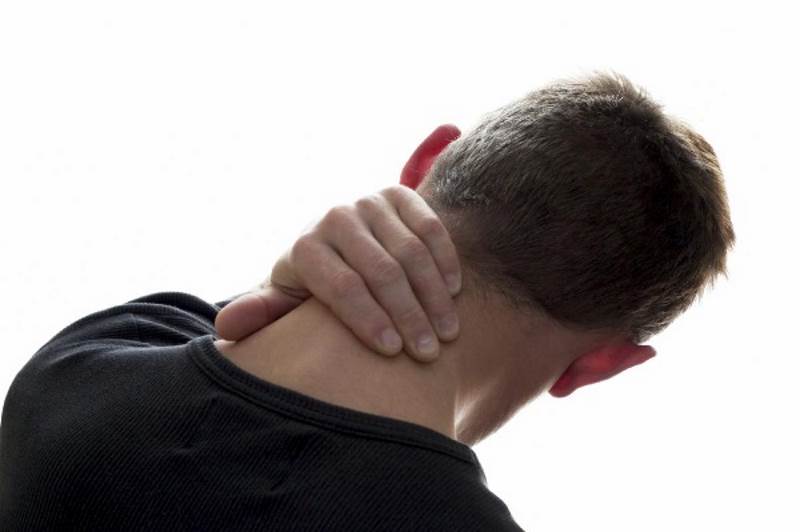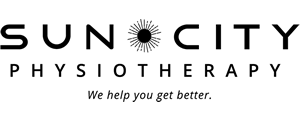Shoulders
Frozen shoulder is a condition that gets its name from the way it causes a gradual stiffening of the shoulder joint, ‘freezing it up’. The proper term for this condition is adhesive capsulitis – adhesive implying stuck and capsulitis meaning inflammation of the capsule.
Although a very common condition affecting approximately 2% of the population, the exact cause of frozen shoulder remains a mystery. In most cases there is a trigger such as straining the shoulder that then develops into a frozen shoulder, but in many cases it is idiopathic i.e. it just happens. When it is triggered, the capsule – that is the connective tissue sack – that surrounds the shoulder joint undergoes a change in elasticity from being somewhat loose and stretchy to being tight and without much stretch.
When it does happen, it follows a distinct pattern of which there are three stages.
The first stage is the freezing stage and is characterized by the onset of a quite intense pain in the shoulder and upper arm and a gradual seizing up of the shoulder. It becomes very difficult and painful to lift the arm up, rotate it outwards, or reach behind your back. This stage typically lasts about 3-6 months then frozen shoulder moves into stage two, the frozen stage, in which the pain starts to subside but the stiffness remains. The shoulder will begin to feel more comfortable in stage 2 but as it is still very stiff, its function remains limited. Again stage 2 can last anywhere between 3 and 6 months before progressing onto stage 3, the thawing stage, when the stiffness finally begins to resolve and the shoulder range of motion is restored.
Although every frozen shoulder will go through these 3 stages, the duration of each stage can vary in each case. Most of the time a full recovery will be made but occasionally full pain-free range of motion does not return. In order to optimize recovery, physiotherapy can help to restore range of motion with techniques such as mobilizations and muscle energy techniques. A prescribed home exercise program is also important so that you can work on stretching the shoulder every day at home. Along with this there are many treatments the physiotherapist is able to do to help control the pain particularly in the early stages of frozen shoulder. This will enable a much more effective stretching regime, which can ultimately lead to a quick and fuller recovery.
Physio Articles
As a physiotherapist, I assess and treat injuries that occur in the workplace. These can be sudden (acute), or gradually over time (overuse). Overuse injuries come from repeated stresses that cause micro-damage of muscles, ligaments, or joints. Over time the micro-damage turns larger, and pain and weaknesses become apparent. Overuse injuries are quite common, difficult to diagnose, but relatively easy to prevent.
Any job comes with some degree of risk of injury. Knowing what your risks are, and working together with your employer or organization to minimize these risks is important for keeping your body happy and work-ready.
When possible, look at your work environment to see if anything is within your control to be changed. I will use physiotherapy as an example: There are times when I can modify my environment in order to make a task easier on my body. I can raise and lower the treatment table, or my stool on which I’m sitting, or in some cases I can use equipment that is ergonomically friendly.
Other times, the environment is not ideal, but also not in our power to modify. This is when you need to think of your body mechanics – the way you use your body to perform a task. Here are some general tips, from head to toe, of ways you can keep good body mechanics. This list is not exhaustive so it is important to consider each task you have to do individually, and what risks may be involved.
Head and neck: a common posture that is a big no-no is the forward head posture where the chin juts forward and hinging occurs about one vertebra in the lower neck. Any time you are in an upright position, keep a nice gentle chin tuck, with the back of your neck long.
Upper body: the other common poor posture is the rounded shoulder posture. When in this position too long, the muscles in the front of the chest get tight, and muscles in the back get long and weak. Also avoid hunching your upper back, which can also contribute to a forward head posture. Keep your shoulders pulled back, with your chest open and proud.
Arms: working repetitively above shoulder height can put you at risk of an injury called ‘impingement’ in the shoulder. When it is possible, avoid having your hands overhead, or above shoulder height, especially if lifting. This can mean using a step if you’re trying to reach high, or finding ways to better position yourself around your task. Avoid repetitive reaching away from the body; if it is possible, put your body closer to where you’re working.
Hands and fingers: if your job involves a lot of bending of your wrist or fingers, gripping or grasping, it is important to stretch those tired muscles, and to strengthen the opposing muscle groups to balance it out. If you work at a computer, look to see what your wrist position is at the keyboard or the mouse. Ideally, they shouldn’t be bent up toward you too far, and the bottom of your wrist shouldn’t sit on a hard surface for a prolonged time.
Low back: Lifting techniques and proper sitting posture can make a big difference in low back pain! If you sit a lot, try to support the normal curve of your spine either through a ‘lumbar support’ or a rolled towel. For those who lift during the work day, remember the following important points. Keep the load you’re lifting close to your body. If what you are lifting is below waist height get into a lunge, or a squat position and stick your bottom out like you’re going to sit in a chair. This helps to preserve a ‘neutral spine’ – which is slightly arched. Lastly with regards to lifts, or picking anything up / putting anything down of any weight, avoid twisting and bending simultaneously.
Legs and feet: avoid twisting your body when you have a foot, or both, planted. Wear footwear that is supportive, and appropriate for your job. If you have been prescribed orthotics, ensure you wear them while working, to help support your feet and legs. If sitting, change up your position: try not to sit all your time with legs crossed, and if you do cross your legs, try to balance how long each is the leg on top.
If you do notice new pain or weakness, attend to it as soon as possible. While many injuries require 4-8 weeks to heal at the level of the tissue (although you may return to some functions during that period), this time frame can be made longer if the injury doesn’t have a chance to heal, or if it gets re-aggravated. Be conscious of what you feel, what your job demands are, what may have caused it, and how that risk can be minimized. Seek help when help is needed, be it through your work’s first aid service, or a health professional.
Sports
With the start of a new year, you may have made New Year resolutions to start running, or to take your running to the next level by completing your first marathon or half marathon. There are many factors to consider when you start to run or train for longer races. One major consideration is to avoid injuries. Shin splints are a common injury that physiotherapists see in clinic.
Shin splints are an umbrella term used to describe pain and discomfort in either the front or back portion of your shin. It usually presents in the lower 1/3 of the leg in the muscles around the tibia (shin bone). It typically has a dull ache but can be sharp and severe pain. Shin splints often start at the beginning of the workout, it may or may not disappear during the workout, and then returns after you finish your workout. Patients may also complain of soreness to touch and swelling.
Shin splints are often associated with running injuries, especially for long distance runners, novice runners, overzealous fitness fanatics, and for those just increasing hill training. You may also see it with dancers, tennis players, basketball players, or high divers, but it is not exclusive to these athletes.
Some of the major causes of shin splints include: changes in running surface and terrain, changes in training regimes, poor foot or ankle biomechanics, poor running mechanics, muscle imbalances, being overweight, or unconditioned athletes doing too much, too fast.
Typically your healthcare professional will want to rule out several conditions with the most serious being stress fractures and compartment syndrome. Once a diagnosis is made, treatment usually starts out conservatively with ice, ultrasound, and interferential current to control pain and swelling. Your doctor may also try to control inflammation with the use of some medications. There will be discussions about activity modifications such as no hill running. There may be other treatments to try such as taping or orthotics, and your physiotherapist may focus on some stretching and strengthening exercises. If conservative treatment does not appear to be helping, aggressive treatment may be considered. This may include a cessation of activity altogether, immobilization, or in some cases, surgery.
Recovery from this injury can be long and frustrating and it can really impede your goals – whether that includes getting back in shape or completing your first marathon. So remember to progress your training at a reasonable rate and make changes in your routine slowly. Happy running!



